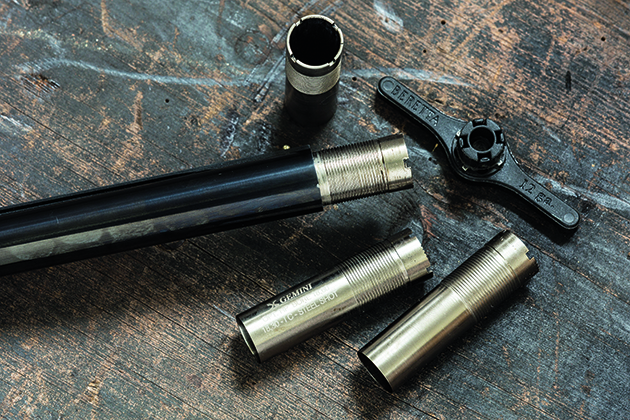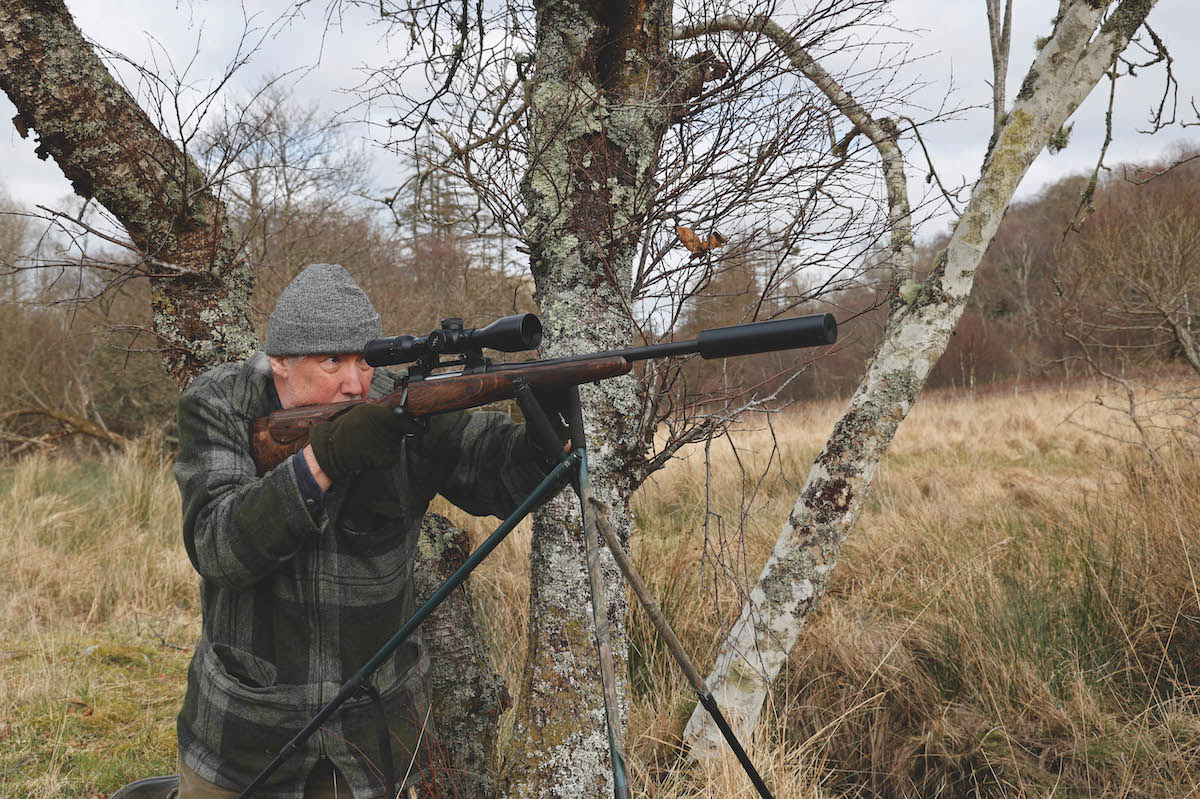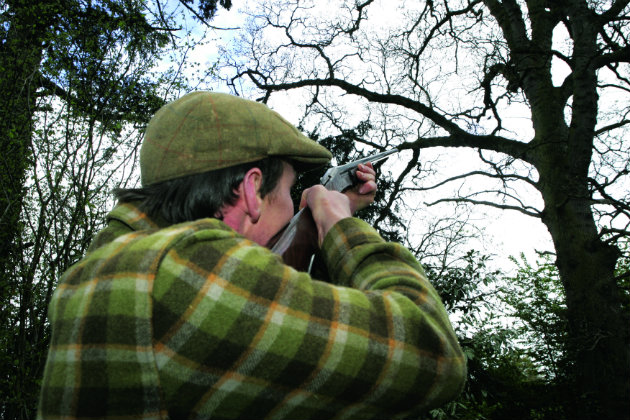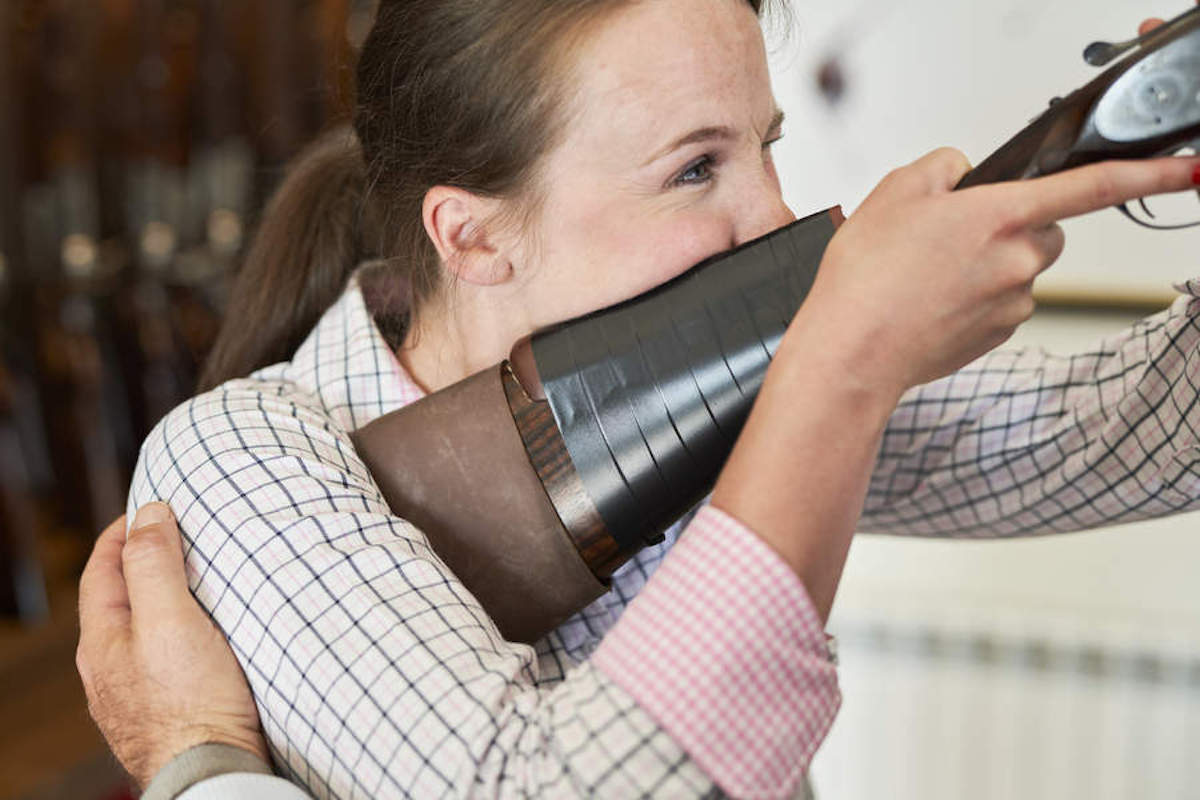The lowdown on shotgun chokes
When to use them, what to use and how chokes help with your shooting

Internal chokes fit flush to the end of the barrel
Shotgun chokes explained
Chokes, the tapered constriction at the muzzle end of a gun, are a much-discussed topic out in the field and on the shooting ground. Who uses what choke, for which target and why? These questions are usually asked if someone is shooting well, the assumption being that if we use the same choke we will get the same results. But to reverse that, if someone is shooting poorly we don’t think that it is because they have the wrong choke in. So we can deduce that the person shooting well may have the right chokes in but they also have good stance, good gun fit and good technique. Chokes can help but they are not the only factor to shooting well.

The pattern made by a BlaserF16 with Teague choke, 3/8 flush, using Eley cartridges
Pattern
The most desirable pattern will be as big as possible but dense enough to have multiple hits on the target to get a good break or kill. Too tight a choke will produce a small pattern that increases the difficulty and consistency on a close-range target. Too open a choke at distance will produce a pattern that may not be dense enough to break targets or kill game reliably.
The choice of choke is not the only factor affecting your pattern; your choice of cartridge can have a big influence, too. So, if you are getting serious about choke choice, pattern testing with different chokes and cartridges at a range of distances can produce some interesting results.

Good stance, gun fit and technique are as important as the right chokes
Size of chokes
- Choke is measured in thousandths of an inch from the nominal bore diameter.
- The nominal bore diameter is measured 9in from the breech and the amount of restriction at the end gives the choke measurement.
- The bore diameter is obviously different in different calibres but also can differ slightly in the same calibre. This is not exclusive, we also see 3⁄8 (tight ¼) and 5⁄8 (tight ½) are quite popular.
- Extra full is also available for the tightest restriction.
- Choke forces the pattern together, which is measured by the percentage of shot load within a 30in circle.
- At distance, the higher percentage of pellets you want in that circle, the tighter your choke needs to be.
- If you’re shooting at closer targets it helps to have an open choke.
How to choose a practical choke
Why your shooting success, whether driven, flighted, decoyed or walked-up, depends on the choke you use
Are we fixated on the amount of choke?
I’ve never been able to make up my mind on what’s the right amount of choke to have in a gun.…
Fixed or multichoke?
Barrels are made as fixed choke or multichoke. Fixed choke guns are fixed to suit the discipline or sport that you are doing. Multichoke gives you the option to change to suit the discipline or even the specific target you are shooting at. Fixed-choke barrels will be marked as to how they are choked but if you are unsure ask your local gunsmith to measure. With multichoke guns, manufacturers have designed different choke systems; some are short, some are long. There is a whole specialist industry making aftermarket chokes for nearly all of the brands.
- Internal chokes fit flush to the end of the barrel and external chokes extend in front.
- External could be slightly easier to take in and out and also provide a longer choke, which some believe produces a better pattern than a shorter choke.
- All types of multichoke need to be tight in the end of the gun for safety, as loose ones can damage the choke and barrel if gasses and shot get behind them.
- If you’re shooting at close targets, go with open chokes such as cylinder and skeet.
- For general clayshooting, go with 1⁄4 and 1⁄2.
- If you’re longer-range clay shooting or game shooting, ½ and ¾.
- Be wary of using full choke with heavy loads as this combination can distort your pattern.
- Testing new cartridges or chokes will produce patterns that you can shoot with confidence. Once you have chosen you shouldn’t need to keep changing them.










